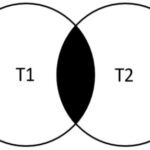MySQL and MongoDB are two of the most popular relational and non-relational database management systems. They are both used worldwide, but each has its own distinctive features and capabilities. While MySQL has been a staple in the tech industry for many years, MongoDB’s rise to prominence has been relatively recent. With the right understanding of each database, you can make an informed decision on which is the best fit for your business.
The biggest difference between the two databases is the way they store data. MySQL stores data in tables while MongoDB stores data as documents. Documents are stored in collections rather than tables. The structure of a MongoDB document is similar to JSON (JavaScript Object Notation), so it’s more flexible and dynamic. That means that you can store more complex data and don’t have to specify a schema ahead of time (although you can specify one if desired).
MySQL offers a greater range of query features, making it ideal for complex queries with multiple JOINs and WHERE clauses. MongoDB, on the other hand, focuses more on the speed of reads and writes, making it well-suited for applications where rapid response times are a requirement.
MySQL is also generally easier and faster to set up, and requires less admin overhead, making it ideal for smaller businesses or applications with limited resources. MongoDB also requires some additional setup, but once set up, it offers a higher level of scalability and flexibility.
In terms of pricing, MySQL is usually cheaper to use than MongoDB. However, MongoDB offers a range of cloud hosting options, so you can take advantage of cost-saving measures like pay-as-you go billing.
At the end of the day, the right database for your business depends on your application’s specific needs. If you’re looking for a faster and more scalable solution, MongoDB may be the better choice. But if you’re looking for a more cost-effective and easier to set up database, MySQL is likely the better fit.




